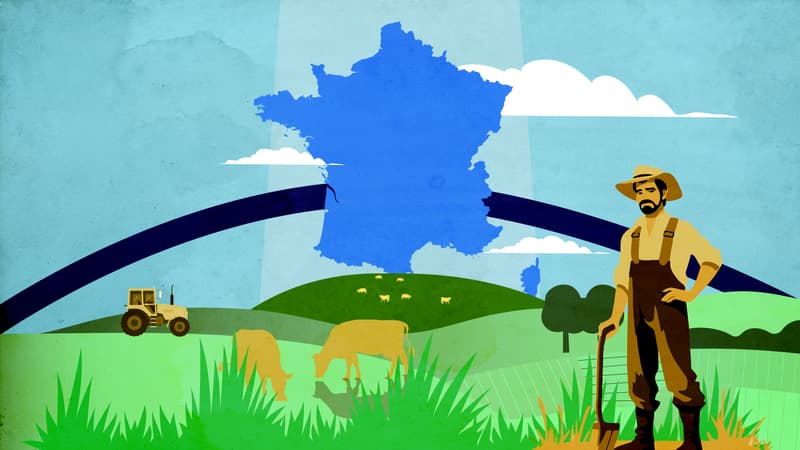It is the unmissable event for livestock farmers, cereal growers, horticulturists… The Agricultural Show opens its doors this Saturday, February 24 in Paris. The President of the Republic, Emmanuel Macron, is eagerly awaited in a context of crisis for the sector, mobilized since mid-January to demand, in particular, a relaxation of rules and better remuneration.
“There is no country without farmers, nor France without agriculture,” said Prime Minister Gabriel Attal on Wednesday, announcing new measures in favor of the agricultural sector.
But what is agriculture in France like today? According to the latest agricultural census data published by the Ministry of Agriculture and Food, in 2020 there were 389,800 active agricultural holdings, almost 100,000 fewer than ten years earlier.
Cereal crops, livestock, horticulture, horticulture and even viticulture… The data also highlights the wide range of types of agriculture that coexist in France, as shown on the map below. Write the name of your municipality to know the most important production.
This map reveals several regional specificities: the cereal crops that surround the entire Ile-de-France, the livestock farms present in the center of France and in the northeast quarter, the sheep farms more widely distributed among the mountain ranges and the poultry and pig farms . in Brittany.
A combination of factors that dates back to the 19th century.
This specialization is the result of decades of work by farmers. “In the 19th century, the development of mixed agriculture was first observed, the main objective of which was the self-sufficiency of the peasant family,” explains geographer Jean-Paul Charvet to BFMTV.com. “France did not enter a model of intensive production until after the Second World War,” explains the professor at the University of Paris-West.
In the second half of the 20th century, cooperatives and companies greatly influenced the territorial specialization of production between regions. “The specializations that existed were reinforced by the creation of these marketing structures, but also of advisory structures for farmers,” specifies Jean-Paul Charvet.
Livestock farming in decline?
However, agricultural frontiers have tended to change in recent years. “We are seeing a decrease in livestock farming in favor of large crops,” explains Karine Daniel, a specialist in agricultural economics and associate researcher at the National Institute of Agronomic Research (Inrae). “This is related, among other things, to the effects of labor availability and labor limitations, which are very harsh in the livestock sector.”
In certain regions, public aid can weigh in the balance to maintain historic productions, despite increased competition. An example of this is pig farming, still closely associated with Brittany.
“Today it faces strong competition from Spain and Germany,” observes Karine Daniel. “While countries with a livestock tradition such as the Netherlands or Denmark tend to reduce their animal production due to environmental limitations.”
Therefore, I am not sure that this map of agricultural France will last long. Drought problems, labor shortages, changes in consumer habits and even differences in remuneration between different types of agriculture could well shake up the French agricultural landscape in the coming decades.
Source: BFM TV


